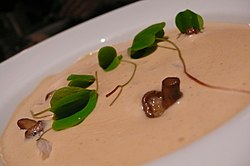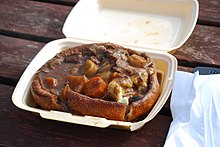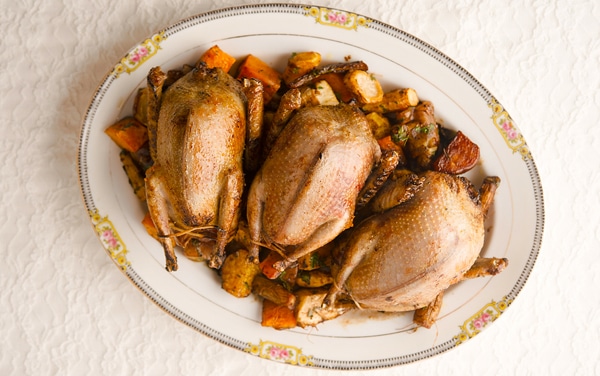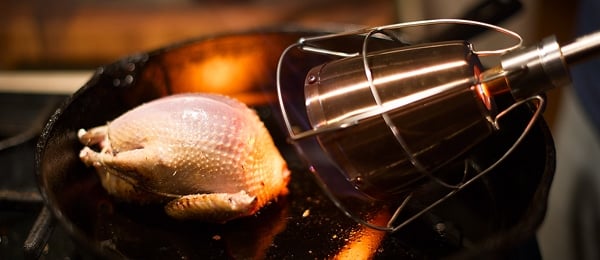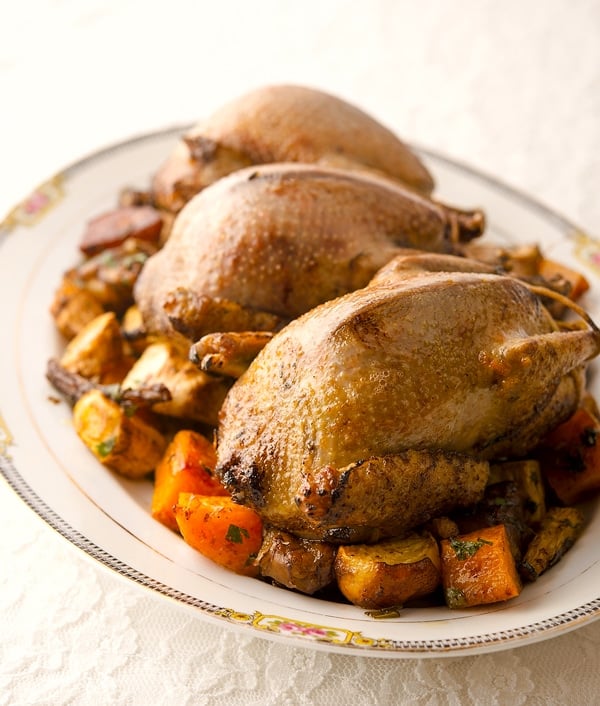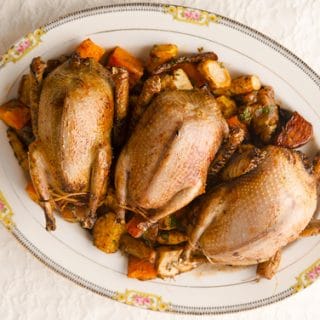
Venetian Sauce (French: Sauce vénitienne) is a classical French herb sauce used to accompany fish. It consists of:
- a velouté and fish fumet base
- equal quantities of tarragon vinegar and white wine reduced with:
- chopped shallots and chervil
- White wine sauce
- Herb juice
Fettuccine with Venetian Chicken Recipe
Redady in : 1hr 5mins
Serves: 6-8
Ingredients
2cups chicken stock or 2 cups chicken broth
8ounces boneless skinless chicken breasts
6tablespoons unsalted butter
1garlic clove, finely chopped
1cup finely chopped carrot
1⁄4teaspoon sea salt
1cup tomato juice, preferably organic
1lb dry fettuccine
freshly grated parmigiano-reggiano cheese
Directions
- In a saucepan, bring chicken stock to a boil.
- Meanwhile, cut the chicken breasts into lengthwise strips about the width of a finger; drop the strips into the boiling stock.
- Cover and bring to a boil; decrease heat and simmer for 4 minutes.
- Remove the cover and set aside, allowing the chicken to cool in the liquid.
- When cool, transfer chicken to a cutting board and reheat the stock.
- Meanwhile, melt 1 tablespoon of the butter in another large saucepan.
- Stir in the garlic and cook over low heat until the garlic becomes golden.
- Add 1 cup water to prevent the garlic from browning; stir to combine.
- Add in carrots and salt; cook over moderate heat, stirring frequently, until the mixture is nearly dry with just a bit of water left.
- Be vigilant and stir constantly toward the end of this step to be sure the carrots do not brown at all.
- Add the hot stock and tomato juice; cover and bring to a boil; decrease heat, set the cover ajar, and simmer gently for 35 minutes or until the carrots are very soft.
- Puree with an immersion blender until you have a smooth puree; set aside.
- Cut the chicken strips lengthwise into 1/8-inch thick slices, then cut across to make 1/8 inch dice; add the chicken to the sauce and reheat gently.
- Bring a large pot of water to a boil; generously salt the water and add in the fettuccine.
- Cook, stirring often, until al dente; drain the pasta and transfer to a heated platter or shallow gratin dish.
- Toss with the remaining butter and fold enough sauce to coat the noodles generously.
- Sprinkle with Parmigiano-Reggiano; serve immediately; pass more cheese at the table.
Veloute Sauce Recipe
Total:20 min
Prep: 20 min
Yield: 2 cups
Ingredients
3 tablespoons butter
3 tablespoons flour
2 cups chicken stock
Salt
Freshly ground white pepper
Directions
In a saucepan, over medium heat, melt the butter. Stir in the flour and cook for 2 minutes. Whisk in the stock, 1/2 cup at a time. Whisk until smooth. Season with salt and pepper. Bring the liquid to a boil and reduce the heat to low and cook for 15 minutes. Remove from the heat and serve.
Total:20 min
Prep: 20 min
Yield: 2 cups
Ingredients
3 tablespoons butter
3 tablespoons flour
2 cups chicken stock
Salt
Freshly ground white pepper
Directions
In a saucepan, over medium heat, melt the butter. Stir in the flour and cook for 2 minutes. Whisk in the stock, 1/2 cup at a time. Whisk until smooth. Season with salt and pepper. Bring the liquid to a boil and reduce the heat to low and cook for 15 minutes. Remove from the heat and serve.
